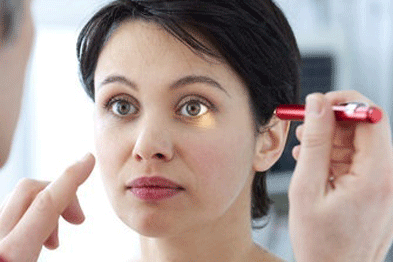Neurological Assessment : Checks Pupils

- Observes Both Pupils Simultaneously For: Equality, Size and Shape.
- Compares pupils for equality.
- Determines size, dilated, constricted, pinpoint.
- Determines irregularities in shape.
- Observes Direct Pupillary Light Reflexes.
- Checks one pupil at a time.
- Shines flashlight into eye from side.
- Repeat other eye.
- Observes Consensual Pupillary Reflex
- Shines flashlight into each eye alternately.
- Observes opposite pupil. Opposite pupil should constrict when light shore.
- Charts description of pupils: Equality, size, shape, reaction to light.
- Observes pupillary response to accommodation
- Have patient follow a closer moving object such as a pen.
- Pupils will constrict (or accommodate) to the closer moving object. * cannot be tested on blind or confused persons.
- Observes Extraocular Movements
- Asks patient to focus on object.
- Moves object; medical, lateral, superior, inferior and circular. In the pattern of an "H."
- Observes movement of both eyes in each of above directions; notes abnormalities or weakness. A. Charts extraocular movements as "full" if no abnormalities or "unable to move eyes laterally, medially etc."















No comments:
Post a Comment